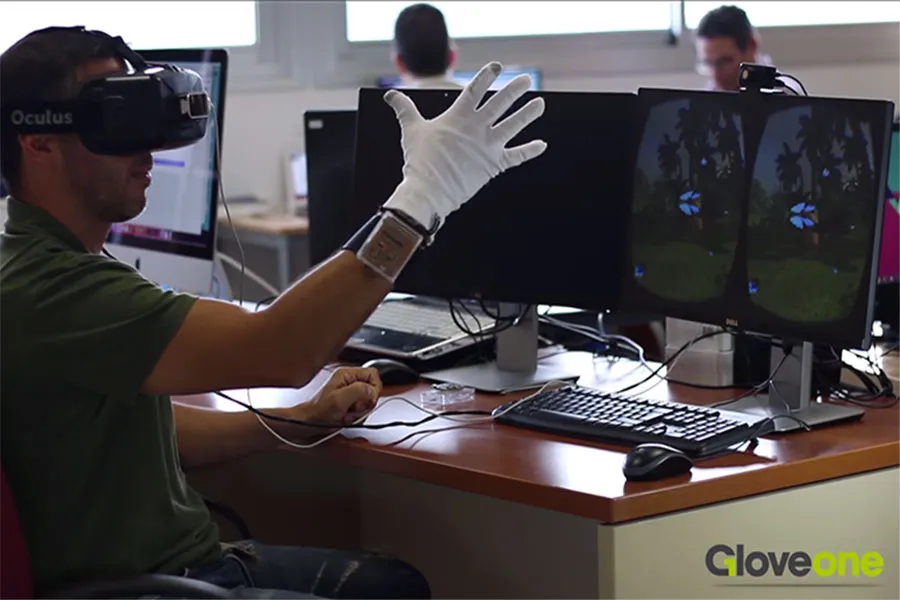You may remember the Nintendo Power Glove from it is prominent feature in the advertising vehicle movie The Wizard from 1989, and perhaps from its less than prominent feature on store shelves. The consumer market simply wasn’t ready for the Power Glove in the early 90s, but the team at the Microsoft BizSpark startup, Neurodigital Technologies, is hoping to prove today’s consumers are, with the GloveOne.
The GloveOne is a wireless haptic feedback glove that allows you to feel objects that are in a VR environment when combined with a Leap Motion controller, creating what they are dubbing “Extended Virtual Reality.” According to the team, the developers kit is due out this January. Additionally, GloveOne is planning to go the crowdfunding route that so many other VR startups have chosen. According to the video, they plan to launch their crowdfunding campaign at the upcoming TechCrunch Battlefield. Response to the tech has been great so far, tech blogger Hugh Langley raved, “combine this with an oculus rift and we may have already solved virtual reality’s input problem.”
The GloveOne is very reminiscent the early forms of another piece of early VR tech, the DataGlove – which was developed by VR pioneers Thomas G. Zimmerman and Jaron Lanier in the early to mid eighties and actually served as the reference for Nintendo’s Power Glove (which was actually a less powerful version).
I reached out to Thomas Zimmerman via email for a comment on the GloveOne and he is “[excited] to see a renewed interest in gloves and goggles.” Zimmerman believes that the time is ripe for a revisitation of this technology, with the advancements in both graphic engines and faster machines at lower cost propelling the way. He also commented that they had worked on haptic feedback technology in the past as well with the DataGlove:
“Back then we realized the importance of tactile feedback as it was common to put you hand through virtual objects. I tried putting little mechanical relays on the ends of the fingertips, as they were the smallest electro-mechanical devices I could get at the time. While it was helpful to get a sensation when you touch something, but what we really wanted was force-feedback to simulate inertia and interaction with virtual solid objects. But any feedback is better than none. This was particularly noticeable when we tried to play air guitar with the DataGlove, which was one of the original mitigations for the glove. Without the tactical feedback of the fretboard, it was really hard to play intentional notes.”
It’s clear that haptic feedback is in the future for VR, but there is definitely still a lot of debate in the community as to what form the input should take. With input devices ranging from standard controllers, to Omni directional treadmills, to motion tracking, the only thing clear is that there are a lot of potential solutions. The question is, which one is the right one?
Do you think wireless haptic gloves are the solution for VR? If not, what is?



























